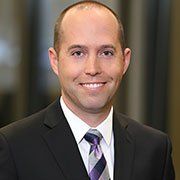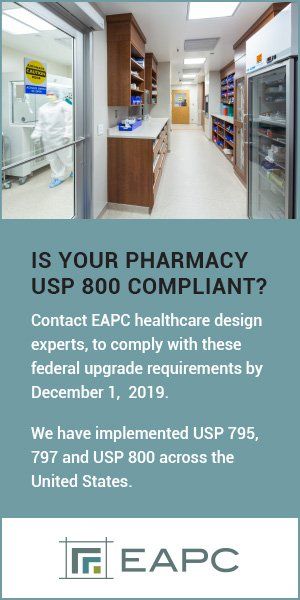Interview
Insuring the Highest Health of Minnesotans
Lucas Nesse, President and CEO
Minnesota Council of Health Plans
What are some of the most unexpected things you have encountered since joining the Council?
Obviously, the COVID-19 pandemic was a headwind that no one saw coming and I gained the experience of working with the plans to quickly adapt and support their members. The Council has always worked collaboratively to make health care affordable and accessible for Minnesotans, but the exponential growth of telehealth has required particularly close coordination to support continued access to care. The pandemic has also highlighted how important the additional services that the nonprofit health plans provide are for optimal health. For example, there’s been a renewed focus on community giving and our foundations have provided significant financial assistance related to addressing social isolation, mental health, food insecurity, domestic abuse as well as supporting broad availability of personal protective equipment. Organizations receiving financial and other support from health plans include Second Harvest Heartland, Greater Twin Cities United Way, People Serving People, YMCA of the Greater Twin Cities, and many others.
What are some of the ways the Council is a resource for consumers?
The Council is a resource for consumers in a variety of ways, including helping Minnesotans gain entry into the health care system, finding the best providers for their specific situation, and ensuring coordinating of care overall. Efforts can also include support for food security, housing, education, and transportation to appointments.
Extending reinsurance is a top priority
You have been working with issues around reinsurance – please tell us about these efforts.
Reinsurance was first considered on the federal level as a necessary tool for market stability under the Affordable Care Act. When that fell through at the federal level, the market was unstable and more costly. Minnesota stepped up with our own proposal and it has performed as advertised — bringing much needed stability and more affordable premiums, 20% lower on average, to Minnesota’s individual market. It does so by directly paying for a portion of high-cost claims. We are in year four of a five-year federal waiver and right now we are seeing bipartisan support to extend the program for a fifth year. Reinsurance has been so successful that it should be considered as part of a longer-term solution.
Please tell us about your work related to COVID-19.
The health of Minnesotans is the highest priority of the nonprofit plans we represent, and they stepped up immediately for their members. In addition to community giving efforts, health plans took voluntary actions very early on that including waiving any cost sharing for testing and in-patient treatment, broad expansion of telehealth services, relaxed out-of-network requirements, and removal of prior authorization procedures. We also work closely with state officials to continuously assess if there are additional steps that can be taken to ensure timely and barrier-free access for Minnesotans, including support for the vaccination effort.
What non-COVID legislative issues are you working on this session.
Extending reinsurance is a top priority, and so is a proper permanent expansion of telehealth. Telehealth utilization during the pandemic was a success story thanks to the close coordination that made it work for Minnesotans. The question remains about where it will level off, but the future clearly will have higher utilization of telehealth. That is a good thing because it will support better access and it has the potential to bring more efficiency to care models, as well.
What are some of the ways the Council is addressing the topic of health care equity?
There is a lot of great work going on in Minnesota right now on health equity, but obviously more needs to be done. One of the biggest challenges is driving the close coordination necessary to make real progress. Health plans recently made their senior leaders available to create a Health Equity Committee focused on coordinating a focused effort. As an example of our intentions, at only our second meeting, we were able to unite around a recommendation to update the Universal Initial Credentialing Application Form to include voluntary disclosure of race, ethnicity and language so that information is available to support health equity efforts by identifying diverse mental health providers. That quick and substantial action is just one of many impactful steps we will be advancing to improve health equity in Minnesota.
How does the public health work you are doing with community health groups around Minnesota fit in with your health care equity initiatives?
Our plans are engaging with a wide variety of public health initiatives, ranging from mental health to physical activity to environmental health initiatives. Every 5 years, our plans come together to set priority areas for community engagement after reviewing state and local health assessments and outline those goals and partnerships in a Collaboration Plan. Through these initiatives, our plans address health equity in three key ways:
- Creating and supporting a diverse workforce within our organizations.
- Increasing access to culturally and linguistically appropriate care.
- Improving quality of care.
We know we can’t make everyone healthier on our own, which why we value our work with others in the community and invest in programs that aim to reduce health disparities.
What work are you doing around the topic of prescription drug costs?
What could be considered step one in making an impact on drug costs was our successful effort to require transparency regarding drug companies’ price increases. The law generally requires drug manufacturers to report certain information to the state if drugs costing more than $100/month increase their price more than 10% in one year or 16% over two. The information they must submit include the factors contributing to the increase, costs associated with manufacturing, marketing, R&D, sales revenue, profit, any agreements made to delay a generic version, and the ten highest prices paid for the drug in any other country. The goal is to put pressure on their regular price increases and scrutinize the reporting to inform the best next steps in supporting affordability.
What other goals/projects do you have for 2021?
We are always working to find practical and innovative ways to ensure that all Minnesotans get access to high-quality care at the most affordable price. So, in partnership with the Minnesota Chamber of Commerce and the Minnesota Hospital Association, we are working on a High Value Care Initiative to more broadly identify services that are considered to have low or no value and develop protocols to minimize their occurrence. A 2017 Minnesota Department of Health study found that $55 million was wasted in a single year on a small subset of services known to be of low value, which is generally care that is medically unnecessary and can include things like redundant or unneeded diagnostic tests, lab tests, therapy services, radiology services and pharmaceuticals. We are excited to focus an effort here in Minnesota that has great potential to maximize efficient, effective care – and ultimately lower cost.
What would you like physicians to know about the Minnesota Council of Health Plans?
Health plans truly want to work closely with you to support optimal health. I have regular conversations with the leaders of the provider associations that are constructive and focused on working together and problem solving. There is a natural push-pull between providers and payers but it can and should be a positive conversation because we all have the same goals of supporting the well-being of Minnesotans.
Lucas Nesse, JD,
President & CEO for the Minnesota Council of Health Plans. Since 2019, Mr. Nesse has guided the Council’s members toward consensus and is the face and voice of Minnesota’s nonprofit health insurance companies. He works with all of the member health plans and stakeholders to pursue high-quality and affordable health services for Minnesotans. Prior to assuming this role at the Council, Lucas was the Health Policy and Grassroots Director for the Minnesota Business Partnership, a large employer membership organization. He served previously for nine years in various roles at the Minnesota Senate. He’s also on the board of Minnesota Community Measurement.
MORE STORIES IN THIS ISSUE












